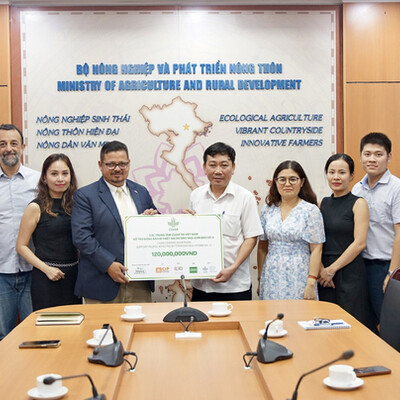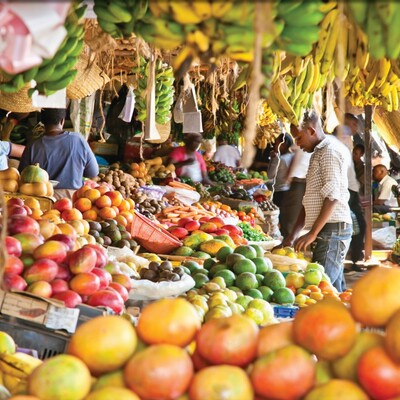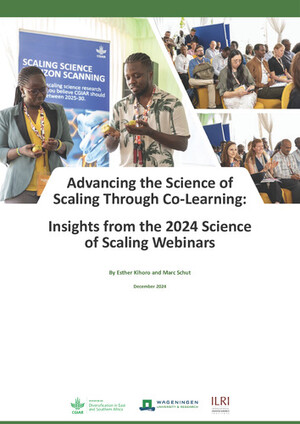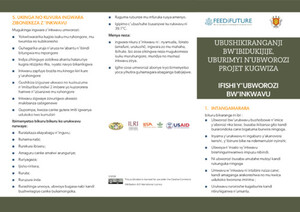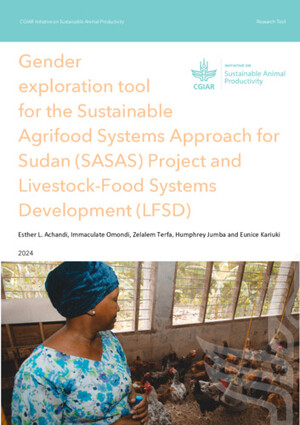
Enhancing food security through sustainable livestock systems
Iain Wright, deputy director general of the International Livestock Research Institute (ILRI), gave the keynote presentation at a side event on enhancing food security through innovation in sustainable livestock systems at the Committee on World Food Security (CFS) conference held in Rome last week. The event focused on the how technological, economic and financial innovations can accelerate livestock’s contribution to ending hunger and contributing to many of the other United Nations (UN) Sustainable Development Goals (SDGs). The Food and Agriculture Organization’s (FAO) Berhe Tekola served as moderator.
Wright’s presentation covered a broad range of livestock issues in the developing world. Livestock contributes directly to nine of the SDGs and indirectly to the eight others. Despite concerns in the developing world about livestock’s negative contributions to greenhouse gases and possible dietary risks, demand for livestock in the developing world continues to grow rapidly. Consumption of beef, pork, milk and chicken will have grown two- or three-fold from 2005 to 2050, driven by urbanization, rising income and growing populations. Most of that increase will come from smallholder farms, which in 2010 contributed to 72% of livestock production in Africa and 75% in Asia. While in developed countries we may see continued specialization in the livestock sector, growing rural populations in Asia and particularly Africa mean that mixed (crop and livestock), smallholder farms will remain prevalent for another generation or more.
Roughly speaking, Wright said, the nutritive status of the world’s population can be divided in thirds. One third of humanity are well-fed and well-nourished; one third are obese, costing the world some USD2 trillion; and one third are hungry, stunted or malnourished. It’s estimated that 11% of gross domestic product (GDP) in Africa is lost each year to poor nutrition. These vastly differing starting points are reflected in data on hunger and stunting: While roughly 25% of people living in developing countries are hungry and some 35% are stunted, in high-income countries less than 5% are hungry or stunted, but nearly 20% are obese.
Livestock can play a critical role in alleviating global hunger and malnutrition. Some 150 million infants and children are stunted; but meat, milk and eggs can provide the amino acids and key nutrients (vitamins A, B12, choline, iron, zinc) humans need to flourish. A recent study found that where stunting levels are high, as little as one egg a day can reduce stunting by nearly half among 6–9 month-old babies. Evidence continues to mount that animal-source foods (ASFs) are essential during the first 1,000 days of life, and in appropriate amounts remain important for a healthy diet throughout life.
ASFs are a critical source of indispensable nutrients, but more than that, they play an essential role in the livelihoods of millions. Livestock accounts for some 40% of the world’s agricultural GDP, although the percentage varies from 15–80% among developing countries. Livestock provide a host of other global goods:
- Over half the cereals in the world can only be produced with livestock in the system (soil fertility, traction, cash for inputs)
- More than half a billion smallholder mixed crop-livestock farmers in the world directly depend on livestock and more than two-thirds of these are women, for whom livestock can bring about transformative changes;
- The situation for women is particularly dire in Africa, where only 23% of women have access to credit and 15% to land; it’s estimated that Sub-Saharan Africa lost USD2.5 trillion (11% of total wealth) in 2014 because of gender inequality;
- By 2030, the continent will create as many as 140 million jobs for women in livestock.
Innovations are critical to meeting the growing demand for ASFs, Wright noted. One startling example: The average African cow produces only six percent of the milk produced by cows in OECD countries. Numbers like this mean that relatively small increases in absolute productivity can generate significant improvements in nutrition and farmer incomes. Management strategies that stress improved genetics, health and husbandry are apt to yield better returns than any one strategy alone.
Concerns have recently arisen over the possible environmental harms caused by industrial farming in the developed world, particularly of the methane produced by cows. Less appreciated is the role that cattle in particular can play in promoting a robust circular bioeconomy: 23% of nitrogen for crop production in crop-livestock systems in the developing world comes from manure. Some 15% farms in southern Africa and 81% in northern Africa depend on traction for plowing, and even today some 7 million oxen are the main source of power for tilling in the Ethiopian highlands.
A recent, well-publicized report from the EAT-Lancet commission on healthy diets argued that the world’s food systems are, in the words of one of its authors, ‘transgressing all the planetary boundaries’. It recommended a major shift to a plant-based diet. The report was criticized, however, for failing to take into account the needs of the developing world, where livestock is consumed at rates of only 10–20% of those in developed countries. A recent study showed that shifting to the sort of diet recommended by the EAT-Lancet report would impose extraordinary costs on the world’s poor. In low-income countries, following the report’s recommendations could cost more than 80% if the average person’s daily income.
Wright closed with some broad recommendations for improving the productivity of livestock in low-income countries. More research is needed into better feeds, breeds and health, he said, as are more effective and better funded development interventions. More can be done to promote ‘nutrition-sensitive livestock interventions’ to increase the availability, affordability, access and use of animal-source foods—directly and through better income. And new tools are being developed to better assess the impacts of interventions on women’s roles, including household nutrition.
During discussion Wright highlighted several specific technologies that could enhance the contribution of livestock to food and nutrition security, including using genomic selection to improve productivity and adaptation of livestock, innovative public-private partnerships to deliver animal health services, using digital technology to provide services to farmers, an ensuring access to credit and other financial services tailored to small-scale livestock keepers and pastoralists.
An interesting response came from a Brazilian farmer named Mauroni Cangussú, of Mona Lisa Farm, who discussed how his farm has for generations produced sustainable beef in environmentally friendly, silvo-pastoral landscapes.








